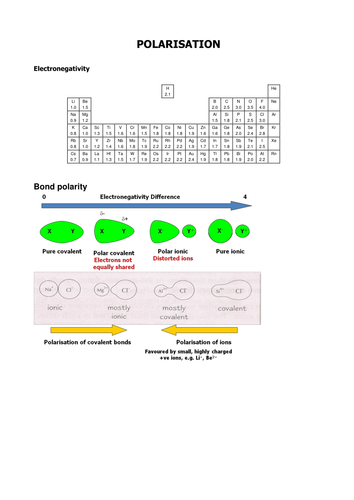








AQA AS level Unit 1 Section 3 Bonding
Using the specification and books
No exam questions are included due to copy right
Including:
Homework booklets
Assessment sheets
Interactive powerpoints (rarely seen in A-level)
Can be completed over 2 lessons
LESSON 7 Electronegativity and bond polarity
Objectives:
To define and understand the concept of electronegativity
To understand and deduce why some covalent bonds and molecules are polar
To deduce whether a molecule has a permanent dipole
ENJOY!!!
Please rate and comment in order to further improve
Using the specification and books
No exam questions are included due to copy right
Including:
Homework booklets
Assessment sheets
Interactive powerpoints (rarely seen in A-level)
Can be completed over 2 lessons
LESSON 7 Electronegativity and bond polarity
Objectives:
To define and understand the concept of electronegativity
To understand and deduce why some covalent bonds and molecules are polar
To deduce whether a molecule has a permanent dipole
ENJOY!!!
Please rate and comment in order to further improve
Something went wrong, please try again later.
This resource hasn't been reviewed yet
To ensure quality for our reviews, only customers who have purchased this resource can review it
Report this resourceto let us know if it violates our terms and conditions.
Our customer service team will review your report and will be in touch.
£4.00
